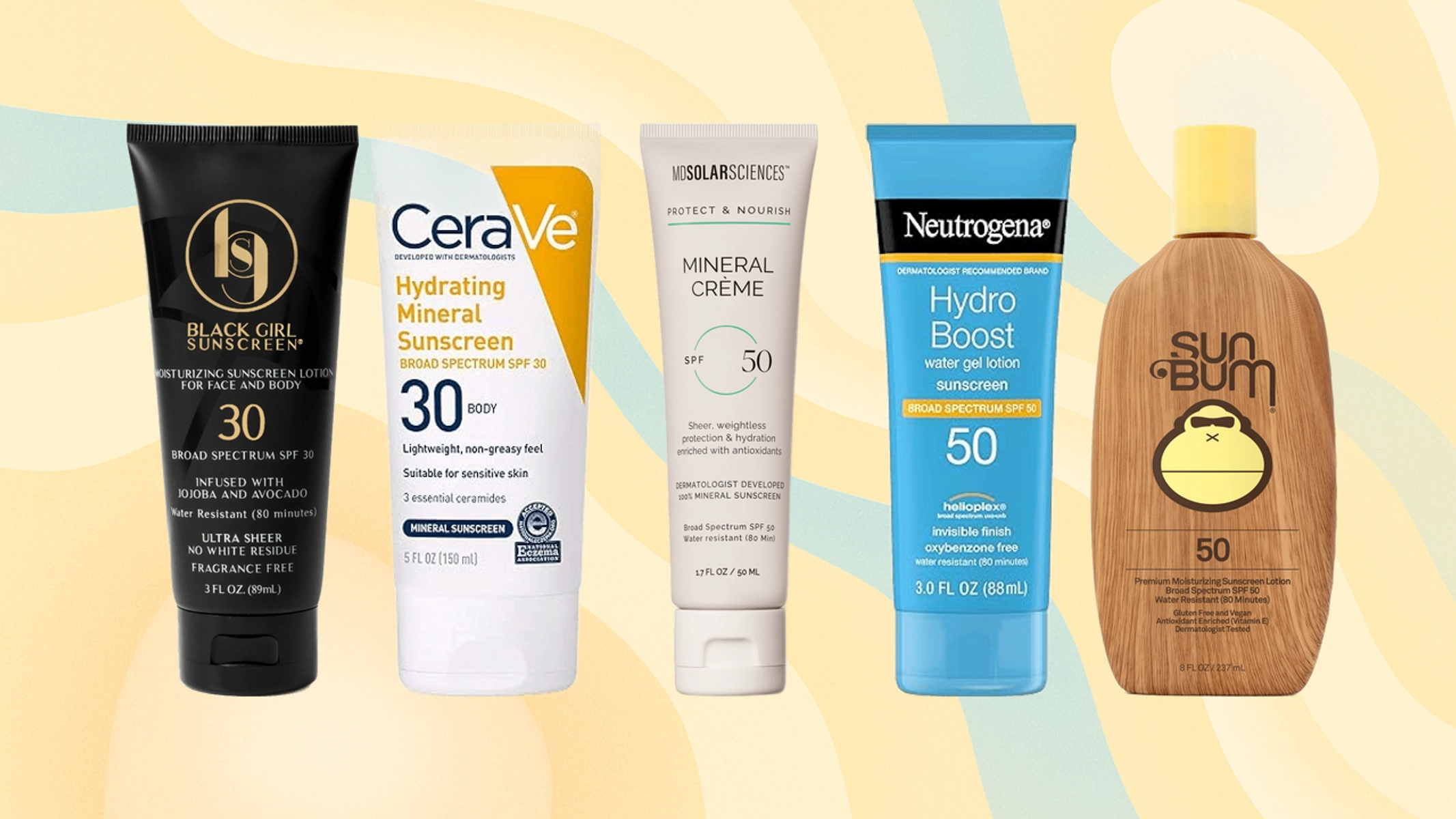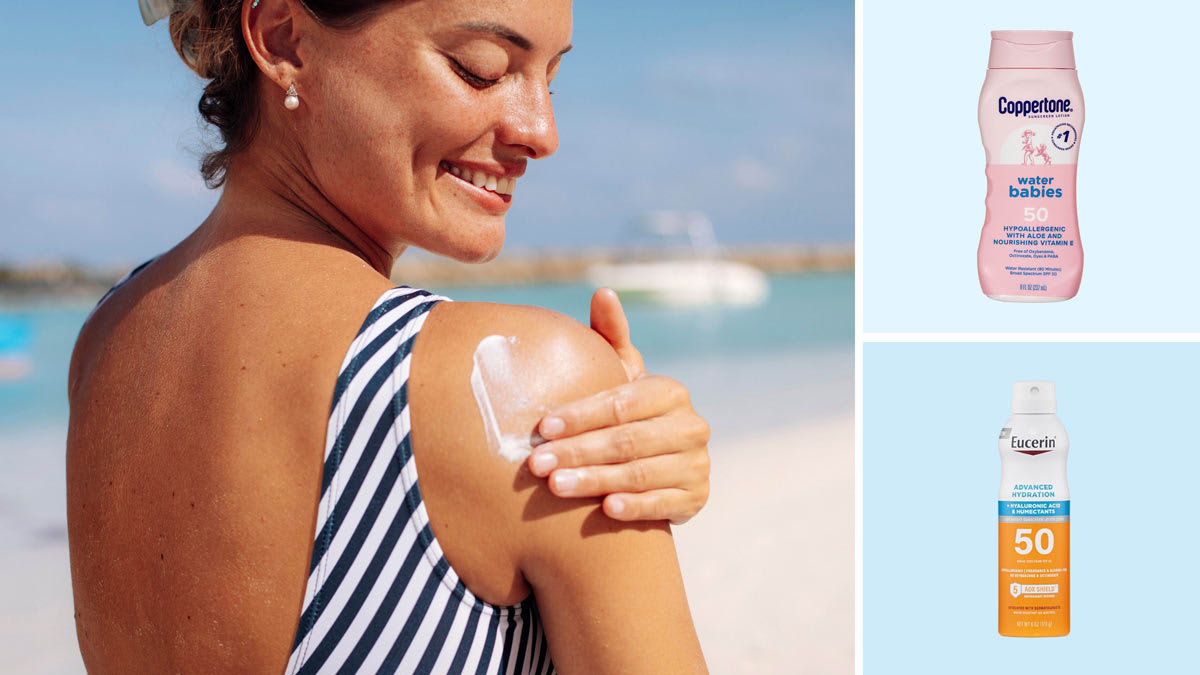Get Your AI Analysis
Personalized skincare insights
Discover your perfect skincare routine with our AI-powered analysis. Get personalized recommendations for glowing, healthy skin.
Start AnalysisFollow Us
Stay updated with the latest skincare tips, trends, and expert advice.
Sunscreen is the single most important anti-aging and skin health product you'll ever use—yet most people get it completely wrong. From choosing the wrong SPF to applying too little, sunscreen mistakes are costing you protection and accelerating skin damage.

This is your complete 2025 guide to sun protection. You'll learn how to choose the perfect sunscreen for your skin type, understand the difference between mineral and chemical formulas, discover the best products on the market, and finally master proper application.
Your skin's future starts with today's sun protection. Let's get it right.
Why Sunscreen Is Non-Negotiable (The Science)

UV radiation is responsible for up to 80% of visible facial aging and is the #1 cause of skin cancer. Here's what unprotected sun exposure does:
Immediate Damage:
☀️ UVB rays: Burn the outer layer, cause sunburn
☀️ UVA rays: Penetrate deeper, cause DNA damage
☀️ Both: Generate free radicals that destroy collagen
Long-Term Consequences:
❌ Premature wrinkles and fine lines
❌ Age spots and hyperpigmentation
❌ Loss of firmness and elasticity
❌ Skin cancer (1 in 5 Americans will develop it)
❌ Accelerated aging (photoaging)
The good news: Daily sunscreen can prevent 90% of premature aging and significantly reduce skin cancer risk.
Mineral vs. Chemical Sunscreen: Which Is Better?
Understanding the two types of sunscreen is crucial for choosing the right one:
Mineral (Physical) Sunscreens
Active ingredients: Zinc oxide, titanium dioxide
How they work: Sit on top of skin and physically reflect/scatter UV rays
Pros:
✅ Work immediately upon application
✅ Less likely to irritate sensitive skin
✅ More stable (don't degrade in sunlight)
✅ Better for acne-prone skin (less pore-clogging)
✅ Reef-safe (won't harm ocean ecosystems)
Cons:
❌ Can leave white cast (though new formulas minimize this)
❌ Thicker, harder to blend
❌ May feel heavier on skin
Best for: Sensitive skin, acne-prone skin, pregnancy, children, ocean activities
Chemical (Organic) Sunscreens
Active ingredients: Avobenzone, octinoxate, oxybenzone, homosalate, etc.
How they work: Absorb into skin and convert UV rays into heat
Pros:
✅ No white cast
✅ Lighter, more elegant texture
✅ Easier to apply under makeup
✅ Better for darker skin tones
Cons:
❌ Need 20 minutes to activate after application
❌ More likely to irritate sensitive skin
❌ Can cause stinging if gets in eyes
❌ Some ingredients may disrupt hormones (controversial)
❌ Not reef-safe (banned in Hawaii, Key West)
Best for: Normal/oily skin, those who prioritize cosmetic elegance, daily wear under makeup
Hybrid Sunscreens (Best of Both Worlds)
Many modern formulas combine both mineral and chemical filters to maximize protection while improving texture. These often provide broad-spectrum coverage with better wearability.
How to Choose Your Perfect Sunscreen
Follow these criteria for optimal protection:
1. SPF 30 Minimum (SPF 50+ Ideal)
SPF 15 blocks 93% of UVB rays
SPF 30 blocks 97% of UVB rays
SPF 50 blocks 98% of UVB rays
Recommendation: SPF 30 minimum for daily use, SPF 50+ for extended outdoor activities
2. Broad-Spectrum Protection
Must protect against both UVA (aging) and UVB (burning) rays. Look for "broad-spectrum" on the label.
3. Water-Resistant (If Needed)
Water-resistant 40 minutes: Light swimming/sweating
Water-resistant 80 minutes: Heavy swimming/sports
⚠️ No sunscreen is "waterproof"—reapply after swimming!
4. Match Your Skin Type
For Oily/Acne-Prone Skin:
Look for: Oil-free, non-comedogenic, mattifying formulas
Prefer: Mineral sunscreens with zinc oxide
Avoid: Heavy creams, oils
For Dry/Sensitive Skin:
Look for: Moisturizing, fragrance-free, gentle formulas
Prefer: Mineral sunscreens (less irritating)
Bonus: Formulas with hyaluronic acid, niacinamide
For Combination Skin:
Look for: Lightweight, oil-controlling, hydrating where needed
Prefer: Hybrid or lightweight chemical sunscreens
For Mature/Aging Skin:
Look for: Anti-aging ingredients (antioxidants, peptides)
Prefer: High SPF (50+) with moisturizing properties
Bonus: Tinted formulas for added coverage
Best Sunscreens of 2025 (By Category)
Best Everyday Mineral Sunscreens
1. EltaMD UV Clear Broad-Spectrum SPF 46
Price: ~$38
View on Amazon
9% zinc oxide
Niacinamide + hyaluronic acid
Best for: Sensitive, acne-prone, rosacea
Why we love it: Dermatologist favorite, lightweight, no white cast
2. La Roche-Posay Anthelios Mineral Sunscreen SPF 50
Price: ~$35
View on Amazon
100% mineral with Cell-Ox Shield
Antioxidant protection
Best for: Sensitive, post-procedure skin
3. CeraVe Hydrating Mineral Sunscreen SPF 50
Price: ~$15
View on Amazon
Zinc oxide + titanium dioxide
Ceramides for barrier protection
Best for: Dry, sensitive skin on budget
Best Chemical Sunscreens (No White Cast)
4. Supergoop! Unseen Sunscreen SPF 40
Price: ~$36
View on Amazon
Completely invisible, weightless gel
Doubles as primer
Best for: All skin types, under makeup
Cult favorite: Viral for good reason
5. Black Girl Sunscreen SPF 30
Price: ~$18
View on Amazon
No white cast on melanin-rich skin
Moisturizing formula
Best for: Medium to deep skin tones
Best Tinted Sunscreens (2-in-1)
6. Australian Gold Botanical Tinted Face Sunscreen SPF 50
Price: ~$14
View on Amazon
Mineral, matte finish
Universal tint works on multiple skin tones
Best for: Oily skin, budget-friendly
7. ISDIN Eryfotona Actinica Mineral Sunscreen SPF 50+
Price: ~$55
View on Amazon
DNA repair enzymes
Lightweight tinted formula
Best for: High-performance, post-laser/peel
Best Sunscreens for Acne-Prone Skin
8. Neutrogena Clear Face Liquid Lotion Sunscreen SPF 55
Price: ~$10
View on Amazon
Oil-free, non-comedogenic
Won't cause breakouts
Best for: Acne-prone, affordable
Best Sunscreens with Anti-Aging Benefits
9. Colorescience Sunforgettable Total Protection Face Shield SPF 50
Price: ~$69
View on Amazon
Mineral with environmental protection
Blue light + pollution defense
Best for: High-end, comprehensive protection
How to Apply Sunscreen Correctly (Most People Get This Wrong!)
Even the best sunscreen won't work if you apply it incorrectly.
The 2-Finger Rule:
Squeeze sunscreen along the length of your index and middle fingers. This equals approximately 1/4 teaspoon—the amount needed for your face alone.
Step-by-Step Application:
Start with clean, dry skin
Apply moisturizer first (if using separate products)
Wait 2-3 minutes for moisturizer to absorb
Apply 1/4 teaspoon of sunscreen to face
Don't forget: Neck, ears, décolletage, backs of hands
Wait 15 minutes before sun exposure (chemical sunscreens)
Reapply every 2 hours or after swimming/sweating
Common Application Mistakes:
❌ Using too little (90% of people do this!)
❌ Skipping ears, neck, hairline
❌ Not reapplying throughout the day
❌ Applying over dirty skin (reduces effectiveness)
❌ Forgetting cloudy days (80% of UV rays penetrate clouds)
Sunscreen + Makeup: The Right Order
The correct layering sequence:
Toner/Essence
Serum (e.g., vitamin C)
Moisturizer
SUNSCREEN (wait 5-10 minutes)
Primer (optional)
Makeup
Reapplying Over Makeup:
Use powder SPF for touch-ups
SPF setting spray
Cushion compacts with SPF
Or blot excess oil, then reapply carefully
Special Situations: Sunscreen for Every Scenario
For Retinol Users:
Using retinol increases sun sensitivity. Use SPF 50+ daily, reapply religiously, and consider mineral formulas for less irritation.
During Pregnancy:
Stick to mineral sunscreens (zinc oxide, titanium dioxide). Avoid chemical filters like oxybenzone during pregnancy/breastfeeding.
For Sports/Swimming:
Choose water-resistant SPF 50+, apply 15 minutes before activity, reapply every 40-80 minutes depending on water resistance rating.
For Daily Driving:
Yes, you need SPF while driving! UVA rays penetrate car windows. Apply broad-spectrum SPF on face, neck, hands, and arms.
Sunscreen Myths Debunked
Myth 1: "I don't need sunscreen indoors"
Truth: UVA rays penetrate windows. If you sit near windows or use screens, wear SPF indoors too.
Myth 2: "My makeup has SPF, that's enough"
Truth: You'd need 7x the normal amount of foundation to get advertised SPF. Always use dedicated sunscreen underneath.
Myth 3: "Darker skin doesn't need sunscreen"
Truth: While melanin provides some protection (SPF 13 equivalent), skin cancer and hyperpigmentation still occur in darker skin. Everyone needs SPF!
Myth 4: "Sunscreen causes vitamin D deficiency"
Truth: Sunscreen blocks some vitamin D synthesis, but you can get adequate vitamin D from diet and supplements. Skin cancer risk > vitamin D concerns.
Myth 5: "Higher SPF means I can stay out longer"
Truth: SPF indicates protection level, not duration. SPF 100 isn't 2x better than SPF 50. Reapply every 2 hours regardless of SPF.
2025 Sunscreen Innovations to Watch
The future of sun protection is here:
1. DNA Repair Enzymes
Sunscreens with enzymes that help repair UV-induced DNA damage (like photolyase).
2. Blue Light Protection
Formulas that protect against HEV (high-energy visible light) from screens.
3. Pollution Defense
Anti-pollution ingredients that create a barrier against environmental aggressors.
4. Probiotic Sunscreens
Formulas with skin-friendly bacteria to support microbiome health while protecting from UV.
5. Sustainable/Reef-Safe Formulas
Ocean-safe sunscreens that don't harm coral reefs or marine life.
Get Personalized Sunscreen Recommendations
Not sure which sunscreen formula is right for your unique skin type and lifestyle? Our AI Skin Analysis can recommend the perfect SPF products based on your skin concerns, sensitivity level, and daily routine.

